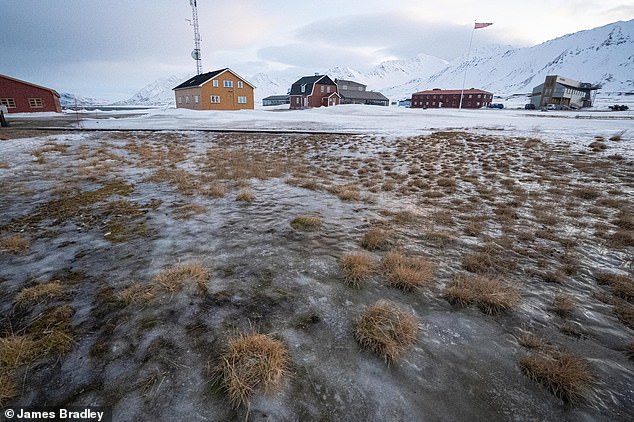
Arctic Greening Surges: Winter Photos Expose Climate-Driven Snowmelt and Blooming Vegetation
Arctic Winter Crisis: Scientists Witness Alarming Changes in Svalbard
The Arctic, once a frozen expanse of ice and snow, is undergoing rapid transformation due to climate change. Shocking photos and firsthand accounts from scientists reveal a stark new reality: melting glaciers, blooming vegetation, and rain replacing snowfall during winter months.
In February 2025, researchers from Queen Mary University of London traveled to Svalbard, a Norwegian archipelago within the Arctic Circle. They encountered temperatures as high as 4.7°C (40.4°F)—far above the historic February average of -15°C (5°F)—and observed dramatic snowmelt, green tundra, and unstable ice.

Melting ice and snow formed vast temporary lakes, with researchers navigating pools of water in areas once frozen solid.
Unprecedented Winter Thaw
Svalbard, warming 6-7 times faster than the global average, experienced record-breaking warmth. Air temperatures in Ny-Ålesund averaged -3.3°C (26°F) for February 2025, with 14 days above freezing. Rainfall triggered widespread snowmelt, exposing soil soft enough to scoop with a spoon. Vegetation emerged months early, resembling spring conditions.

Plants bloomed through melting snow, defying typical Arctic winter patterns.
Dr. James Bradley, who led the expedition, described the scene as “surreal,” emphasizing the urgency for climate action: “Climate policy must catch up to the reality that the Arctic is changing much faster than expected.”
Impacts on Land and Safety
The unstable “snowpack”—layers of melting and refreezing snow—raised avalanche risks, jeopardizing both local communities and research teams. Scientists even questioned the feasibility of future fieldwork.

February 2025 temperature anomalies compared to 1991–2020 averages revealed alarming Arctic warming.
Arctic Amplification: A Vicious Cycle
The phenomenon of Arctic amplification—where melting ice exposes darker ocean surfaces that absorb more heat—is accelerating changes. Researchers warn that winters like 2025’s are not isolated events but part of a dire trend.

Meltwater pooling at Midtre Lovénbreen glacier highlighted rapid ice loss.
A New Arctic Reality
The team’s findings, published in Nature Communications, challenge assumptions of a “reliably frozen” Arctic. Winter warming events, once anomalies, are now frequent. Without swift emissions reductions, vast Arctic regions could resemble Scotland’s lowlands within decades.

Rainfall dominated winter precipitation, complicating data collection.
Global Implications
The Arctic’s transformation has planetary consequences. Melting ice contributes to sea-level rise, while thawing permafrost releases stored greenhouse gases. The past decade, already the hottest on record, underscores the need for immediate action to avoid surpassing critical climate thresholds.
Final Warning
“These changes are a reminder of the accelerating pace of climate disruption,” the researchers stated. “The Arctic’s future—and ours—hangs in the balance.”
Images and data from Svalbard serve as a urgent call to address the climate crisis before irreversible tipping points are reached.


